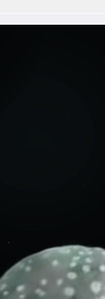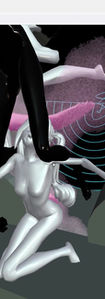
POSTHUMAN TOPOLOGIES
Virtual Exhibition
Under
Construction


Mafka Mari, Didem Erbaş, Sahej Rahal, Sarah Valeri, Divya Singh, Simin Azarpour, Felice Grodin, AdrienneRose Gionta, D.Priyanka, Deleuze Recombination, Antoine Lortie
Lorena banares, İpek Kuran, Anastasiia Belousova, Frederik Franke, MAGENTA, Quassine / Claire Cical, Daniel Marks,
Alex Reifenrath, Sepideh Tajali, Yvonne Jones, Jarek Lustych
We are envisioning new paradigms of spatiality, contemplating the myriad ways subjects can position themselves in relation to the world. This exploration is guided by a shift towards understanding novel forms of posthuman agency. As we undertake this journey, we deracinate our traditional egocentric models and reference frames afforded to us by discrete manifolds—ones which are anchored in the subject's inner world as antagonistic to an outer world. Instead, we venture towards conceiving new types of agents rooted in continuous manifolds, where the foundational ground emerges from the 'Outside'.
Within this new terrain, each artist becomes a creator, birthing an agent continuous manifold. For these agents to exist in the World, the space must be continuous and originate from a conception of the 'Outside' whereby the classical confrontations between the inner and the outer are overcome. This implies the presence of continuous space-time manifolds or dynamic substrates. The question that arises then is, how can we create mobile spatiotemporal reference frames or models of subjectivity that not only are adequate for such continuous manifolds but also are capable of constructing and illuminating them, thus enabling us to experience the worlds which they afford and sanction?
To answer such a question, we study the agents in each artist's project, examining their ability to access the characteristics of their general space or substrate. Through this lens, we aim to navigate and bring to the foreground the complexities of these continuous and dynamic substrates.



We propose three distinct types of continuous manifolds, corresponding to Dynamic, Space, and Time invariants.
The first is dubbed the Ocean. Within this dynamic invariant, each artist gains access to the characteristics of general space, presented metaphorically as an ocean. This part embodies a complexity of space-time levels. Linear time is not a constituent of the ocean, except within localized structures, yet it grants access to oceanic time-space configurations that allow traversing across various levels.
Our second manifold, the Sun (or Fire), represents a space invariant. Here, artists connect directly to the vast general space of the sun, unhindered by any mediation. Although the sun is an intensely complex substrate, we wield the tools to render its intricacies intelligible. This stage offers a platform for speculation, contemplating how agents could interact or communicate within such an intensely continuous substrate.
Finally, we turn to the Air (or Tornado), representing a time invariant. This manifold is centered around the concept of the 'Outside'. Each artist can perceive the characteristics of general space in the form of Air, Gas, or Clouds. Similar to the Ocean, this part houses intricate levels of space-time, pushing us to construct our own models of time and space. Simultaneously, it opens the gates to the 'Outside', offering a new realm of exploration.
Through these manifold metaphors, we navigate the complexities of space-time, each offering unique interpretations and exploratory paths.
Assignment Outline:
General Time-Space Manifold: Reflect on the concepts of Ocean, Sun/Fire, and Air/Tornado.
Agent: Consider your agent's characteristics, name, and type. It could be human, posthuman, non-human, etc.
Worlds: Reflect on the world you created in the first assignment. Delve deeper into its main components, axioms, levels, and relations. Think about how it interacts with other agents and how it can be experienced.
Time-Space: Design and speculate about time and space in your world. Consider how it connects to the continuous and dynamic manifold of general space (Ocean, Sun/Fire, Air/Tornado). Delve into the complexities of this environment and speculate on the experience of existing in this world as part of the continuous manifold.
Environments: Conceptualize and visualize your world's environment. Speculate on different types of environments as you travel between worlds.
Movement: Explore how you'll transition from your local structure to others. How will you move among the general characteristics, such as Ocean, Sun, and Air? Consider creating a vessel or an instrument. Reflect on how your Agent transforms as it moves through this intensive and complex manifold. Consider how the agent might communicate with other types of agents, aliens, and radically different forms of intuition, in the Kantian and Boltzmanian sense.
Objects and Artifacts: Reflect on the objects and artifacts from your world. How will you construct them? What happens to them as you traverse other worlds? Consider how they transform and mutate through different levels of time-space, configurations, intensities, and complexity levels.
Radical Comprehension: Speculate on what it means to expand our computational, conceptual, and cognitive resources to compute and make intelligible that which is non-computable and unintelligible to us.
This project challenges participants to expand their creative and conceptual capacities, encouraging exploration of rich, complex themes across philosophical and metaphysical domains.






















